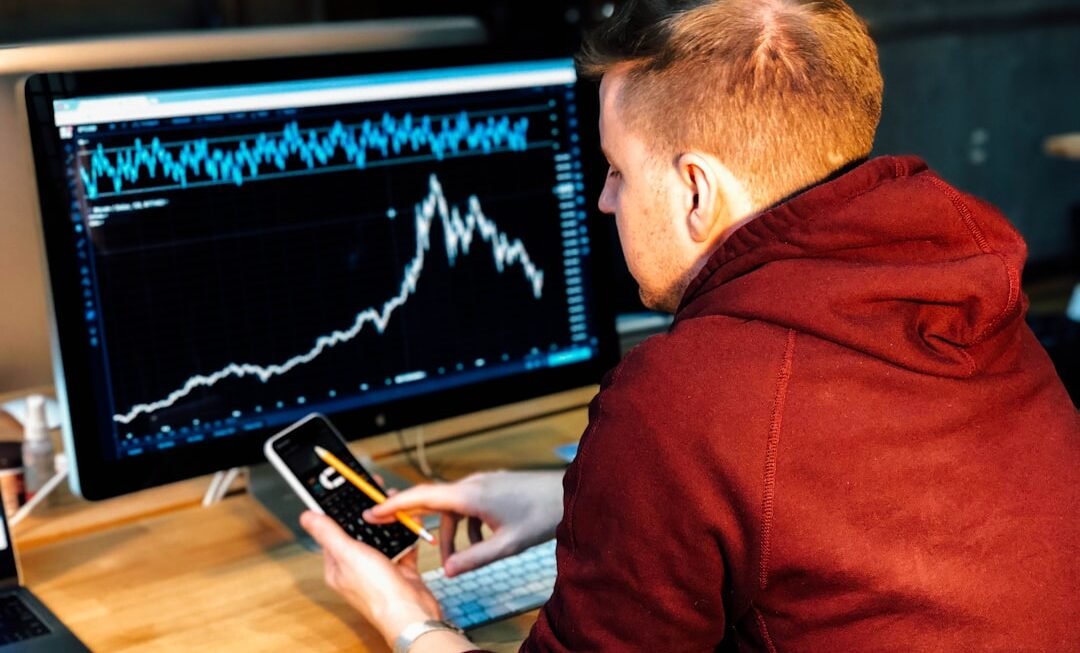The integration of artificial intelligence (AI) into online trading has revolutionized the financial landscape, transforming how traders and investors approach the markets. AI technologies, characterized by their ability to analyze vast amounts of data and learn from patterns, have become indispensable tools for both institutional and retail traders. The rapid advancement of machine learning algorithms and data processing capabilities has enabled traders to make more informed decisions, optimize their strategies, and ultimately enhance their profitability.
As the financial markets continue to evolve, the role of AI is expected to expand, offering new opportunities and challenges for market participants. The adoption of AI in online trading is not merely a trend; it represents a fundamental shift in how trading strategies are developed and executed. Traditional methods often relied on human intuition and experience, which, while valuable, are inherently limited by cognitive biases and emotional decision-making.
In contrast, AI systems can process real-time data from multiple sources, including market trends, economic indicators, and social media sentiment, allowing for a more comprehensive analysis. This capability not only improves the accuracy of predictions but also enables traders to react swiftly to market changes, thereby gaining a competitive edge.
AI-Powered Market Analysis
AI-powered market analysis leverages advanced algorithms to sift through extensive datasets, identifying trends and patterns that may not be immediately apparent to human analysts. By employing techniques such as natural language processing (NLP) and machine learning, these systems can analyze historical price movements, trading volumes, and macroeconomic indicators to generate insights that inform trading strategies. For instance, a machine learning model might be trained on years of historical data to recognize specific patterns that precede significant market movements, allowing traders to position themselves advantageously.
Moreover, AI can enhance market analysis by incorporating alternative data sources that traditional methods often overlook. This includes social media sentiment, news articles, and even satellite imagery of retail parking lots to gauge consumer behavior. By integrating these diverse data points, AI systems can provide a more holistic view of market conditions.
For example, a trader might use an AI model that analyzes Twitter sentiment regarding a particular stock, correlating spikes in positive sentiment with subsequent price increases. This multifaceted approach enables traders to make more nuanced decisions based on a broader spectrum of information.
Automated Trading Algorithms
Automated trading algorithms represent one of the most significant applications of AI in online trading. These algorithms execute trades based on predefined criteria without the need for human intervention. By utilizing complex mathematical models and real-time data analysis, automated trading systems can identify profitable opportunities and execute trades at lightning speed.
This capability is particularly advantageous in high-frequency trading environments where milliseconds can make a substantial difference in profitability. The development of these algorithms often involves backtesting against historical data to refine their performance. Traders can simulate various market conditions to assess how well an algorithm would have performed in the past.
For instance, an algorithm designed to capitalize on short-term price fluctuations might be tested against historical volatility patterns to ensure its robustness. Once deployed, these algorithms continuously learn from new data, adapting their strategies in response to changing market dynamics. This adaptability is crucial in maintaining competitiveness in an ever-evolving trading landscape.
AI-Powered Risk Management
Risk management is a critical component of successful trading, and AI has introduced innovative approaches to this essential aspect. Traditional risk management techniques often rely on static models that may not account for sudden market shifts or unforeseen events. In contrast, AI-powered risk management systems utilize real-time data analysis and predictive modeling to assess potential risks dynamically.
By continuously monitoring market conditions and portfolio performance, these systems can provide timely alerts and recommendations for mitigating risks. For example, an AI-driven risk management tool might analyze a trader’s portfolio in real time, identifying correlations between different assets and assessing the overall risk exposure. If the system detects an increase in volatility for a particular asset class, it can recommend adjustments to the portfolio to minimize potential losses.
Additionally, machine learning algorithms can identify patterns associated with previous market downturns, allowing traders to implement preemptive measures based on historical precedents. This proactive approach enhances a trader’s ability to navigate turbulent market conditions effectively.
Personalized Investment Recommendations
The personalization of investment recommendations is another area where AI has made significant strides.
This level of customization was previously unattainable with traditional advisory services, which often relied on generic recommendations.
AI-driven platforms can also adapt recommendations over time as they learn from an investor’s changing preferences and market conditions. For instance, if an investor demonstrates a growing interest in sustainable investing, the AI system can adjust its recommendations to include more environmentally friendly stocks or funds. This adaptability not only enhances the user experience but also empowers investors to make informed decisions that resonate with their values and objectives.
AI-Powered Trading Assistants
AI-powered trading assistants are emerging as valuable tools for traders seeking to enhance their decision-making processes. These virtual assistants leverage natural language processing and machine learning to provide real-time insights and support throughout the trading journey. By analyzing market data and user queries, these assistants can offer relevant information, answer questions about specific assets, or even suggest potential trading strategies based on current market conditions.
For example, a trader might engage with an AI assistant to inquire about the latest news affecting a particular stock. The assistant could quickly analyze news articles, social media sentiment, and recent price movements to provide a comprehensive overview of the stock’s current standing. Additionally, these assistants can help traders stay organized by tracking their portfolios and alerting them to significant market events or changes in asset performance.
This level of support allows traders to focus on strategy development while relying on AI for timely information and analysis.
Predictive Analytics for Trading
Predictive analytics is a cornerstone of AI’s application in online trading, enabling traders to forecast future price movements based on historical data and statistical models.
This predictive capability is invaluable for traders looking to make informed decisions about entry and exit points.
For instance, an AI model might analyze historical price data for a specific stock alongside macroeconomic indicators such as interest rates or unemployment figures. By identifying correlations between these variables, the model can generate predictions about future price movements under similar conditions. Traders can then use these insights to time their trades more effectively, potentially increasing their chances of success in volatile markets.
AI-Powered Sentiment Analysis
Sentiment analysis is another powerful application of AI in online trading that focuses on gauging market sentiment through the analysis of textual data from various sources. By employing natural language processing techniques, AI systems can analyze news articles, social media posts, and financial reports to determine the overall sentiment surrounding specific assets or the market as a whole. This information can be crucial for traders looking to anticipate market movements based on public perception.
For example, if sentiment analysis reveals a surge in negative sentiment regarding a particular company due to unfavorable news coverage or social media backlash, traders may choose to adjust their positions accordingly. Conversely, positive sentiment could signal potential buying opportunities. By incorporating sentiment analysis into their trading strategies, investors can gain insights that complement traditional technical and fundamental analysis.
Enhanced Trade Execution
The speed and efficiency of trade execution are critical factors in successful online trading, particularly in fast-paced markets where prices can fluctuate rapidly. AI technologies have significantly enhanced trade execution processes by optimizing order routing and minimizing latency. Advanced algorithms can analyze multiple execution venues in real time to determine the best possible price for a trade while considering factors such as transaction costs and market depth.
For instance, an AI-driven execution system might automatically route orders through various exchanges based on real-time liquidity conditions and price differentials. This capability ensures that traders receive the best possible execution prices while minimizing slippage—the difference between the expected price of a trade and the actual price at which it is executed. As a result, traders can capitalize on fleeting opportunities with greater confidence.
AI-Powered Portfolio Management
AI-powered portfolio management tools are transforming how investors construct and manage their investment portfolios. These systems utilize machine learning algorithms to analyze asset performance, correlations between different investments, and macroeconomic factors that may impact portfolio returns. By continuously monitoring these variables, AI-driven platforms can provide recommendations for portfolio rebalancing or diversification strategies tailored to individual investor goals.
For example, an AI portfolio management system might identify that a particular asset class has become overrepresented in an investor’s portfolio due to recent price appreciation. The system could then recommend reallocating funds into underperforming assets or sectors that show potential for growth based on predictive analytics. This dynamic approach allows investors to maintain optimal asset allocation while adapting to changing market conditions.
The Future of AI in Online Trading
As technology continues to advance at an unprecedented pace, the future of AI in online trading holds immense potential for further innovation and transformation. One area poised for growth is the integration of advanced neural networks capable of processing unstructured data more effectively than ever before. This could lead to even more accurate predictions and insights derived from diverse data sources beyond traditional financial metrics.
Moreover, as regulatory frameworks evolve to accommodate the increasing use of AI in finance, we may see greater collaboration between human traders and AI systems. Rather than replacing human intuition entirely, future developments may focus on augmenting human decision-making with AI-driven insights that enhance overall trading performance. The combination of human expertise and machine intelligence could create a new paradigm in online trading where both elements work synergistically for optimal results.
In conclusion, the ongoing evolution of AI technologies will undoubtedly shape the future landscape of online trading. As traders increasingly embrace these innovations, they will need to adapt their strategies and approaches to leverage the full potential of AI-driven tools effectively. The journey ahead promises exciting developments that will redefine how we understand and engage with financial markets.
FAQs
What is AI in online trading?
AI, or artificial intelligence, in online trading refers to the use of advanced algorithms and machine learning techniques to analyze market data, identify patterns, and make trading decisions without human intervention.
How is AI transforming online trading strategies?
AI is transforming online trading strategies by enabling traders to analyze large volumes of data quickly and accurately, identify trading opportunities, and execute trades at optimal times. AI can also help traders manage risk and optimize their trading portfolios.
What are the benefits of using AI in online trading?
Some benefits of using AI in online trading include improved decision-making based on data analysis, faster and more efficient trade execution, reduced human error, and the ability to adapt to changing market conditions in real-time.
Are there any risks associated with using AI in online trading?
While AI can offer many benefits in online trading, there are also risks to consider, such as the potential for algorithmic errors, over-reliance on AI without human oversight, and the possibility of AI models being influenced by biased or incomplete data.
How can traders incorporate AI into their online trading strategies?
Traders can incorporate AI into their online trading strategies by using AI-powered trading platforms, developing their own AI algorithms, or partnering with firms that specialize in AI-driven trading solutions. It’s important for traders to understand how AI works and to continuously monitor and evaluate its performance.












